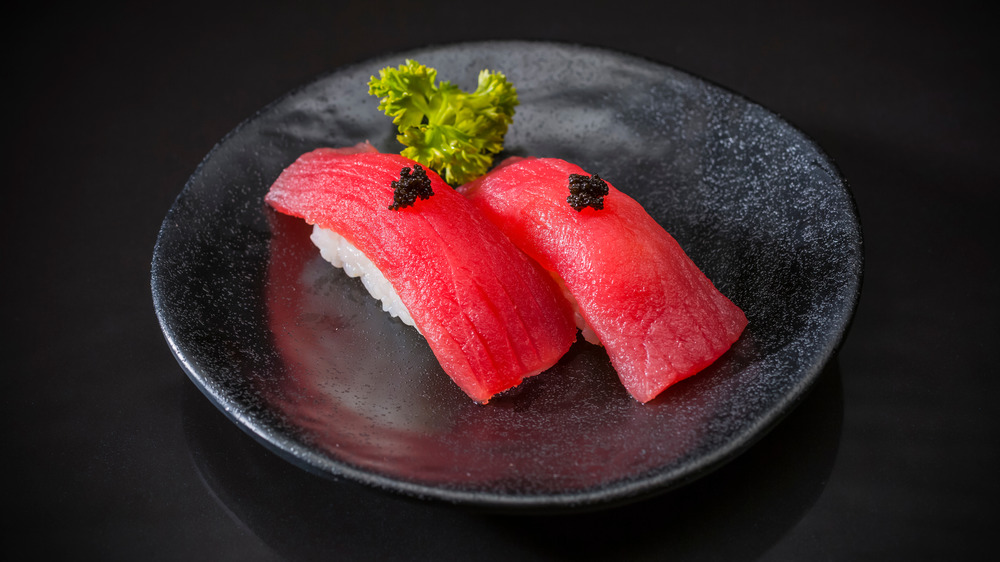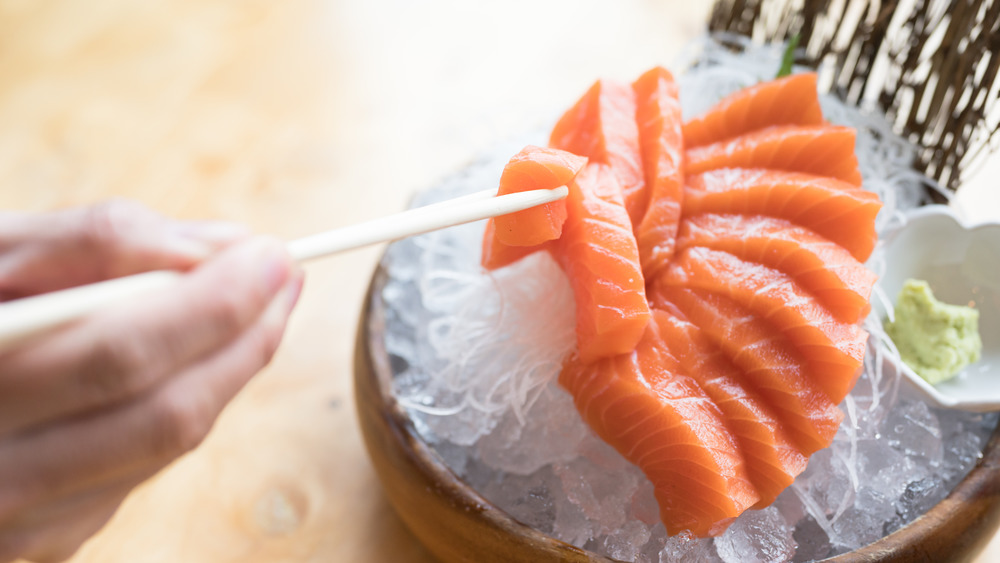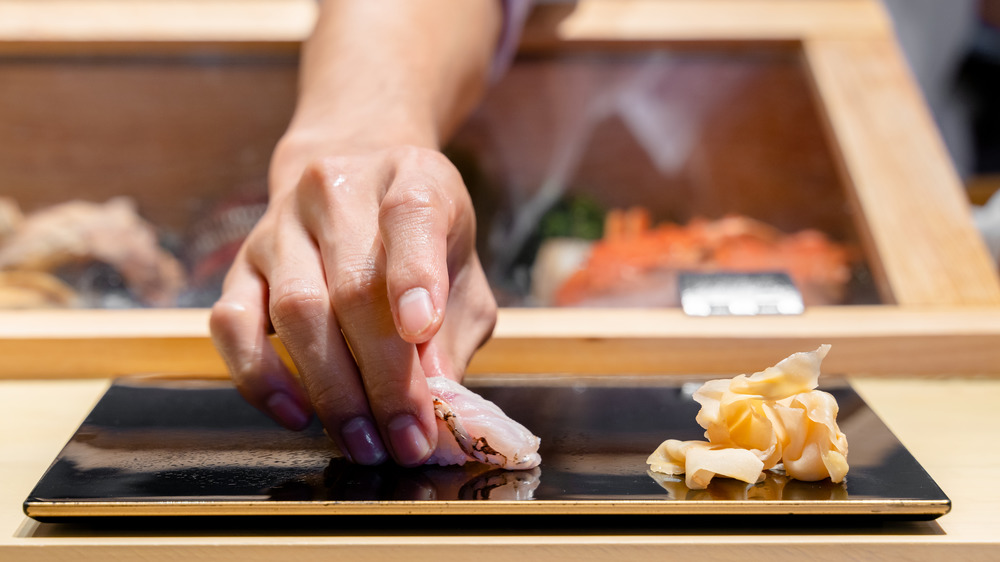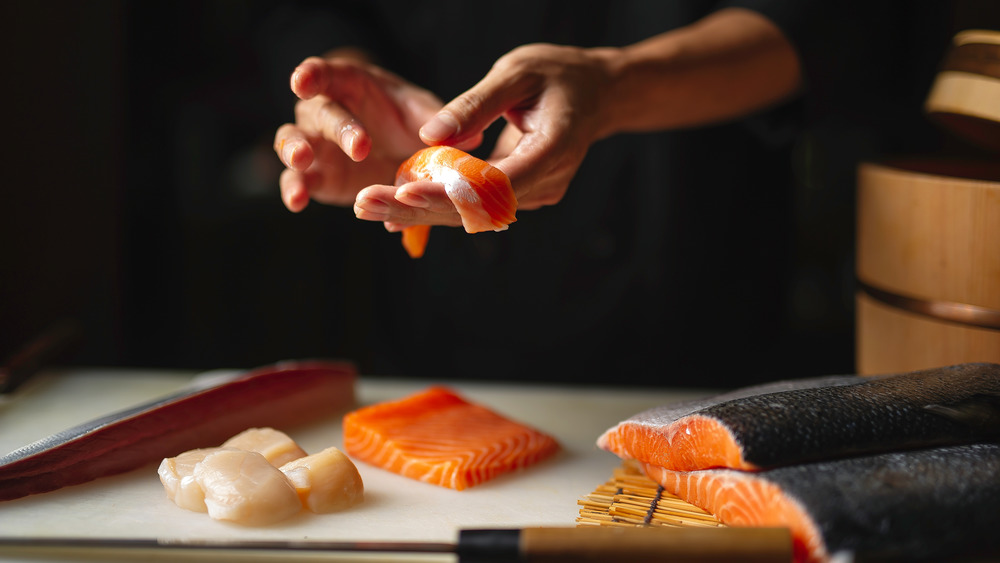What You Should Know Before Eating Sushi For The First Time
Sushi might have been around since the 9th century, but it's come a long way since the fermented rice and preserved fish that was first prepared as a way of keeping East Asians fed. While the dish remained unchanged for literally a thousand years, it was reinvented in 1820s Japan by Hanaya Yohei, who swapped preserved fish for fresh and added vinegar and salt to his rice. He then set up history's first sushi stall on the banks of the Sumida River, and according to PBS, it was a big hit, judging from the crowds of people that flocked to Yohei's eatery.
By September of 1923, copycat sushi stalls had made their way into the city of Edo, which we recognize today as Tokyo. From there, it took about two decades for sushi to make the leap to the United States, where the first known sushi restaurant – Kawafuku Restaurant – in Los Angeles' Little Tokyo was set up in 1966 (via Ventured).
There are five main types of sushi
Hanaya Yohei's twist on rice topped with seafood gave rise to what we now know as nigiri – one of five basic types of sushi – although you might find the sushi restaurant you had your eye on will have other variations on the theme. Nigiri features a topping – usually fish or seafood – that sits on top of a ball of vinegared rice; if that rice embraces a filling and is wrapped with seaweed, it is known as a maki or sushi roll.
When the seaweed and rice swap places and the seaweed hugs the filling instead, the rolls are known as uramaki, while cone-shaped rolls which are made by hand are known as temaki and are best enjoyed solo (via Delishably). Thinly sliced raw pieces of very fresh seafood or meat served without rice is known as sashimi. While you might have heard a lot about sashimi, this dish is probably best enjoyed by sushi veterans who wouldn't think twice about eating anything that isn't even slightly cooked (via My Sushi House).
Chef tips that maximize your sushi meal
Ordering the right sushi is just the first step on the journey to enjoying your first sushi experience. Open Table lists suggested do's and don'ts from the country's top sushi chefs.
Ken Tominga of Boston's Pabu says you're better off sitting at the sushi bar if you're alone or dining with one friend – but if you're part of a larger group, ask for a table. He also says to opt for the chef's choice menu, also known as the omakase, because it will give the expert a chance to show off his specials when they are at their best.
When your sushi is served, says Masaharu Morimoto of Morimoto in New York, there is no need to add wasabi because the chef has already pre-loaded the right amount of the condiment. He also recommends that if you've been given a nigiri, dip that into the soy sauce fish-side down so the rice doesn't disintegrate, and then enjoy the sushi in one bite. As a palate cleanser between bites, Morimoto recommends you have a bite of pickled ginger.
Jiro Kobayashi of Roku in West Hollywood recommends you don't bathe your sushi in soy sauce because it will kill the flavor of the fish and says you should enjoy a traditional Japanese beverage (green tea, sake, or beer) with your meal.
Good sushi can be pricey
There is no other way around this, but expect a hefty dining bill if you want to enjoy good sushi. Because sushi is built around the idea of crafting edible art with raw seafood, its important to find a restaurant that will make the effort to hire the right chefs and to obtain the right ingredients to make the experience worth the while. As Ventured points out, sushi-grade fish is much higher quality than your garden-variety grocery fish because it is primarily consumed raw, and it can command hundreds of dollars per pound, depending on the season. Then there's the fact that a master sushi chef, also known as an Itamae, needs to put in between five to 20 years in training, and that expertise isn't going to come without a cost.
Is it worth it? As Trevor Corson, author of Sushi: An Unlikely Saga of Raw Fish and Rice, tells Thrillist, if you do away with dining at mediocre sushi bars, you'll have more money to spend at a good restaurant, albeit less frequently.



